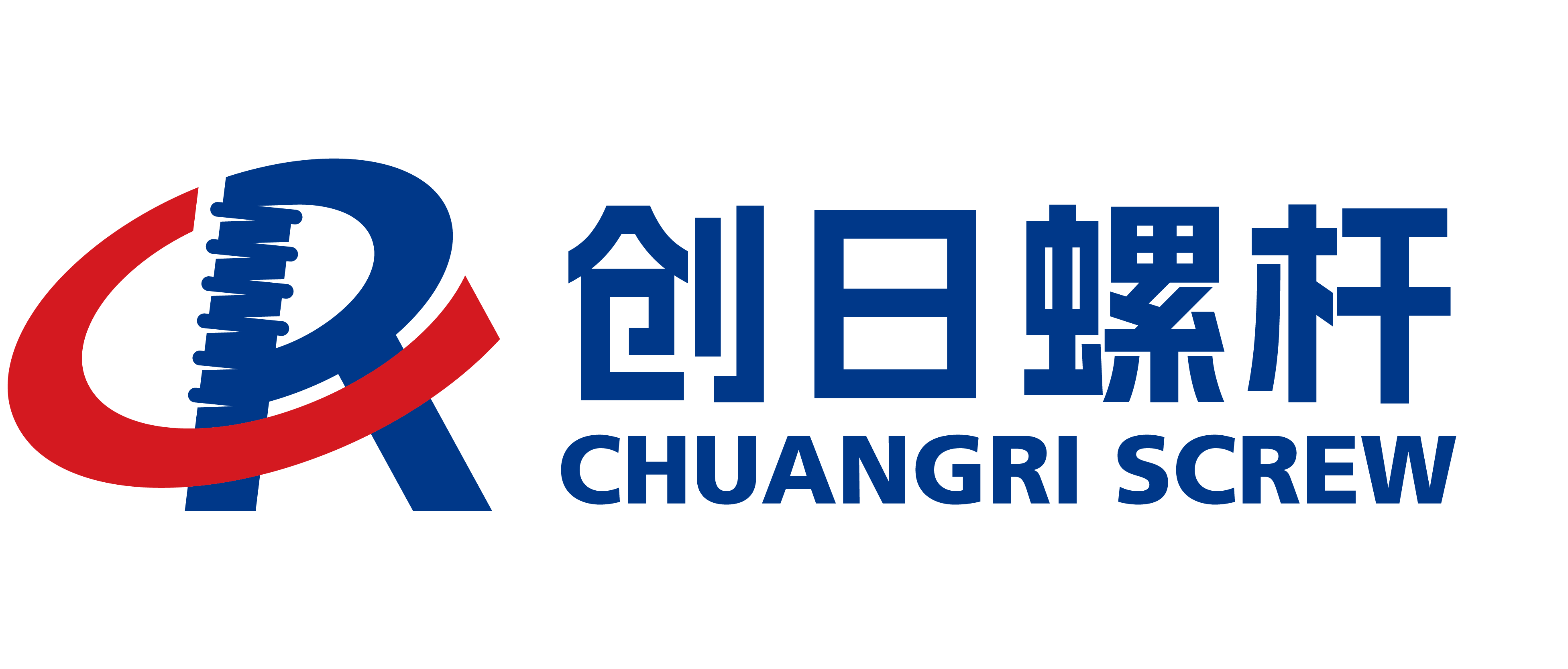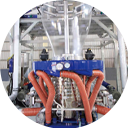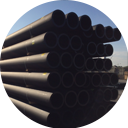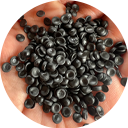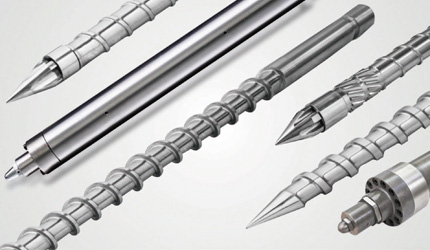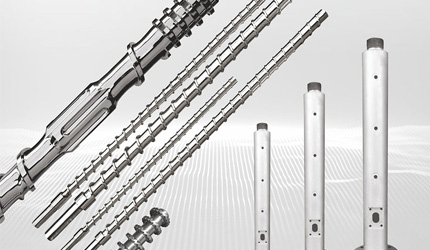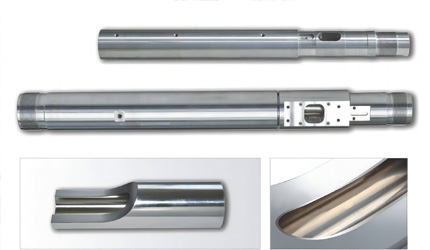How to Improve Mixing Performance in Injection Moulding Screws
How to Improve Mixing Performance in Injection Moulding Screws
Improve Mixing Performance in Injection Moulding Screws: Screw Design Optimization
For folks in plastics injection moulding, mixing inside the screw isn’t just a small detail. It shapes melt quality, cycle speed, part strength, and color evenness. Messy mixing leads to pricey scrap, ugly flaws, and long downtime. At CHUANGRI SCREW, with over 30 years of global know-how, we’ve learned that nailing mixing starts with clever screw design tweaks.
Optimize Screw Geometry for Mixing—for Specific Polymers
A screw’s shape—its length-to-diameter (L/D) ratio, compression ratio, and flight depth—must vibe with the resin you’re using. Here’s a quick peek at what works:
| Polymer | Recommended Screw Feature | Why It Matters |
| PP, PE | Longer L/D ratio (20–24) | Improves melting stability and reduces unmelted particles |
| ABS, PC | Higher compression ratio | Enhances dispersive mixing for rigid polymers |
| Glass-filled resins | Special wear-resistant flights | Prevents early screw wear and maintains consistent mixing |
We craft custom Nitrided Injection Molding Screws for automotive and consumer goods clients needing uniform melt without breakdown. These screws, made from 38CrMoAlA or H13 steel, are hardened via nitriding. This keeps them tough and wear-resistant, ensuring top-notch performance for years.
Barrier Screw and Mixing Sections for Enhanced Melt Uniformity
Barrier screws are a sweet upgrade for engineering plastics. They split solids from the melt and control shear, delivering:
-
Cooler melt temps, dodging heat damage.
-
Super even mixing, especially for filled or colored resins.
-
Quicker color swaps for faster production.
A manufacturer improved melt clarity and reduced streaking in transparent parts after adopting CHUANGRI SCREW Bimetallic Injection Moulding Screws. The advanced mixing sections provided by these screws enhanced uniformity and helped the company reduce unnecessary material waste.
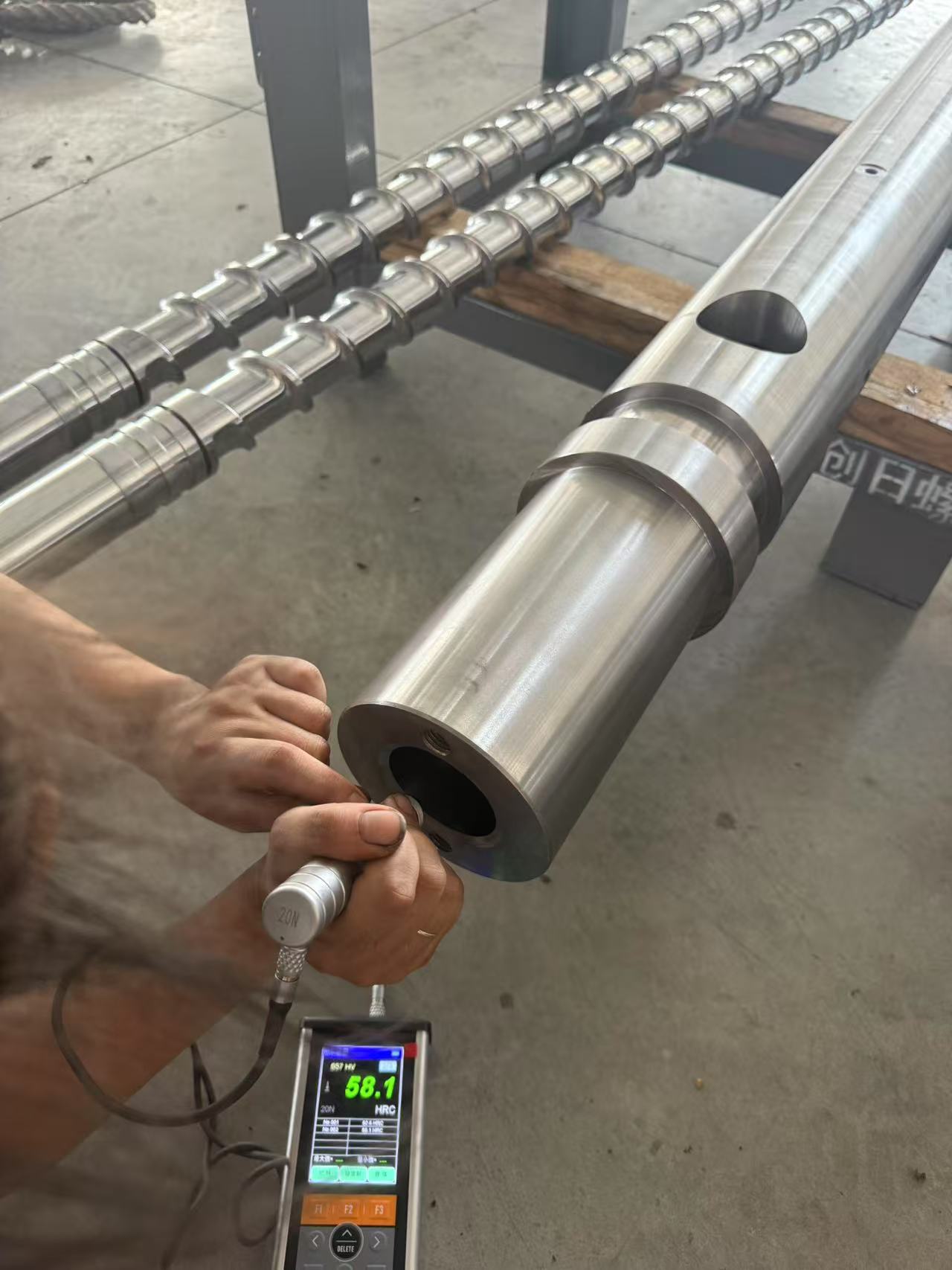
High-Performance Mixing Tips (e.g., DM2 + Eagle Tip)
Mixing tips at the screw’s end act like a final blender before injection. Our Solid Carbide screws with DM2 + Eagle Tip bring:
-
Toughness for resins with up to 75% glass fiber.
-
Great resistance to rust and wear.
-
Steady melt delivery, even at zippy injection speeds.
This precision is key for EV parts and 5G electronics, where flaws can spell safety risks or failed tests. These tips keep things consistent, no matter how fast you push.
Enhance Mixing Performance via Mixing Sections and Screen Packs
While screw design is the backbone, you can tweak mixing with the right mixing section and screen pack.
Dispersive vs. Distributive Mixing Sections
-
Dispersive mixing sections: These apply strong shear to bust up pigment or filler clumps. Perfect for bright colors or filled materials.
-
Distributive mixing sections: These split and remix the melt for even temperatures and texture without too much stress.
At CHUANGRI SCREW, our dual-barrier mixing screws blend both types. This gives processors wiggle room to handle a wide range of materials with ease.
Screen Pack Density and Breaker Plate Effects
Screen packs before the nozzle filter, junk, and boost mixing. Mesh size matters:
-
Finer packs (60–80 mesh): Better blending but risk of pressure drops.
-
Coarser packs (20–40 mesh): More output, less mixing power.
We suggest using screen packs as a fine-tuning trick, not the main mixing fix. Paired with a well-crafted screw, they polish the melt quality to a shine.
Improve Mixing Uniformity with Static Mixing Nozzles and Back-Pressure Control
Static Mixing Nozzles for Melt Homogenization
Static mixing nozzles are like mini mixers before injection. They ensure:
-
Smooth color spread, no streaks or swirls.
-
Even temps, avoiding hot spots or weak weld lines.
-
Steady viscosity for stable injection pressure.
Customers in the toy manufacturing sector have reported improved melt flow and reduced wear issues after upgrading to CHUANGRI SCREW injection moulding nozzles. The precision-engineered free-flowing design of our nozzles increases contact area, minimizes material build-up, and ensures stable processing across a wide range of plastics. These nozzles are set to shine at events like Manufacturing World 2025 Osaka, where Japanese moulders hunt for precision in automotive and medical plastics.
Back-Pressure and Screw Drive Influence on Mixing
Machine settings are a big deal. Higher back-pressure adds shear for better pigment spread but guzzles energy. Here’s our tip:
-
Start with moderate back-pressure (5–10 bar).
-
Watch melt temps to avoid breakdown.
-
Match screw drive torque to mixing needs for filled resins.
At CHUANGRI SCREW, we pair screw designs with machine settings, ensuring hardware and process team up for awesome melt quality.As the plastics industry continues to pursue higher precision and sustainability, these trends will also be highlighted at Manufacturing World 2025 Osaka, one of Japan’s leading industrial trade fairs. Mixing performance in injection moulding screws is expected to be a key focus, especially for processors in the automotive, medical, and electronics sectors that demand defect-free moulding, uniform melt quality, and longer screw service life.
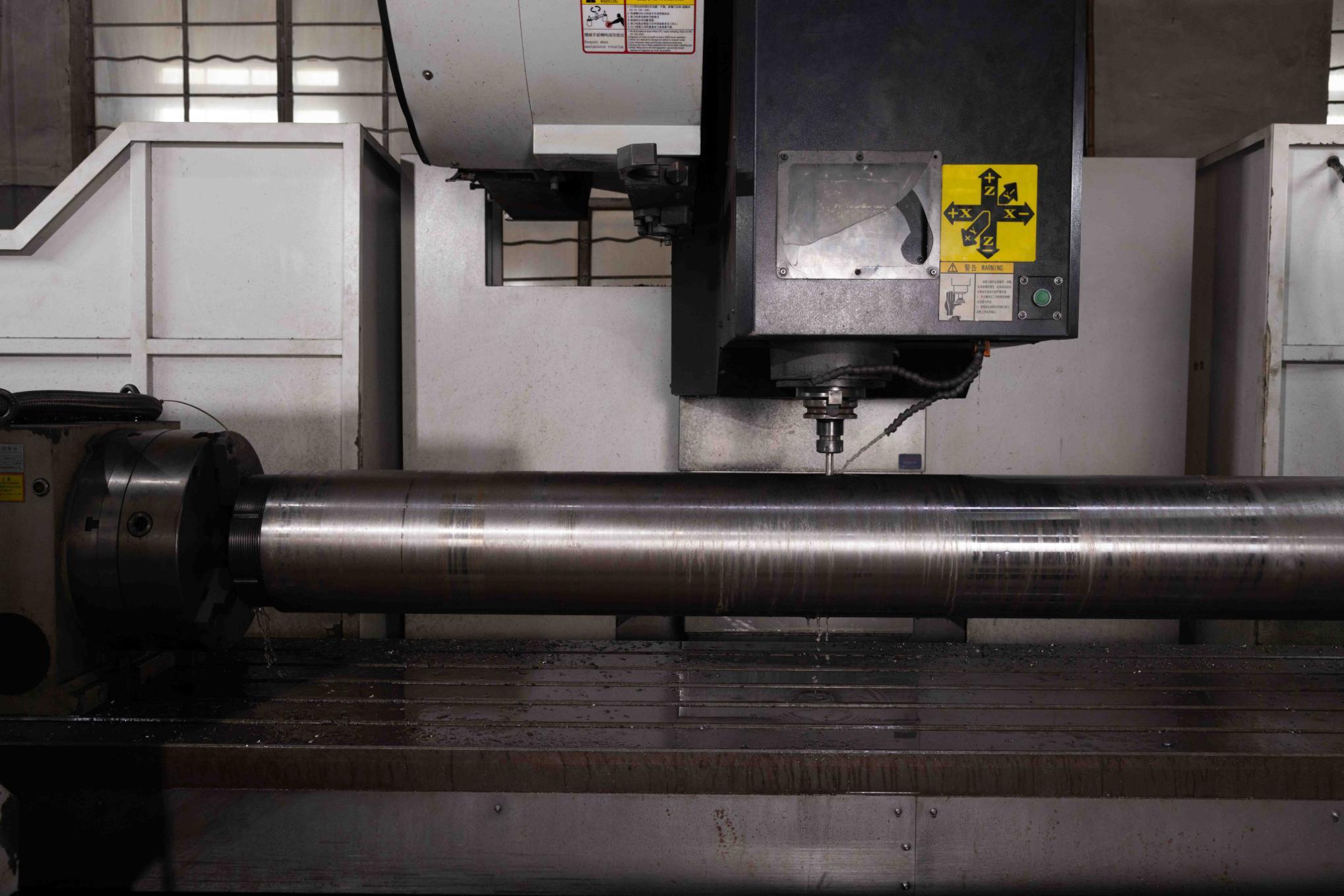
Advanced Numerical and Geometric Strategies for Mixing Performance Improvement
The industry’s going high-tech with numerical design and fancy geometry to boost mixing.
Numerical Optimization of Mixing Elements
Simulation tools let us predict how a screw mixes before it’s built. This saves time and cash. We use CAD tools like SolidWorks and AutoCAD in our R&D to co-design screws with clients. It’s a game-changer for OEMs launching new materials, letting us test performance digitally first.
Pitched-Tip Kneading Elements for Better Dispersive Mixing
New studies show pitched-tip kneading elements spread shear evenly and cut material hang-ups. At CHUANGRI SCREW, we’re crafting screw sections based on this idea for markets like bioplastics, which need gentle yet thorough mixing. It’s a fresh way to keep melt quality top-notch.
FAQ
Q: Why is mixing performance in injection moulding screws critical?
A: Poor mixing causes color streaks, weak weld lines, and uneven part strength. Good mixing boosts quality and cuts scrap.
Q: How does screw geometry impact mixing performance?
A: L/D ratio, compression ratio, and flight design control shear, melt evenness, and residence time. A smart screw design is the key to great mixing.
Q: What is the difference between dispersive and distributive mixing in screws?
A: Dispersive mixing uses shear to break clumps. Distributive mixing evens out the melt without high stress. Modern screws blend both for the best results.
Q: Should I invest in a static mixing nozzle or a new mixing screw?
A: If your screw’s decent, a static mixing nozzle is a cheap boost. For long-term gains and higher output, a custom mixing screw is the way to go.
Q: How can I extend the service life of injection moulding screws while maintaining mixing performance?
A: Pick nitrided or bimetallic alloys. For high-glass-filled resins, Solid Carbide screws resist wear and keep mixing steady after thousands of cycles.
